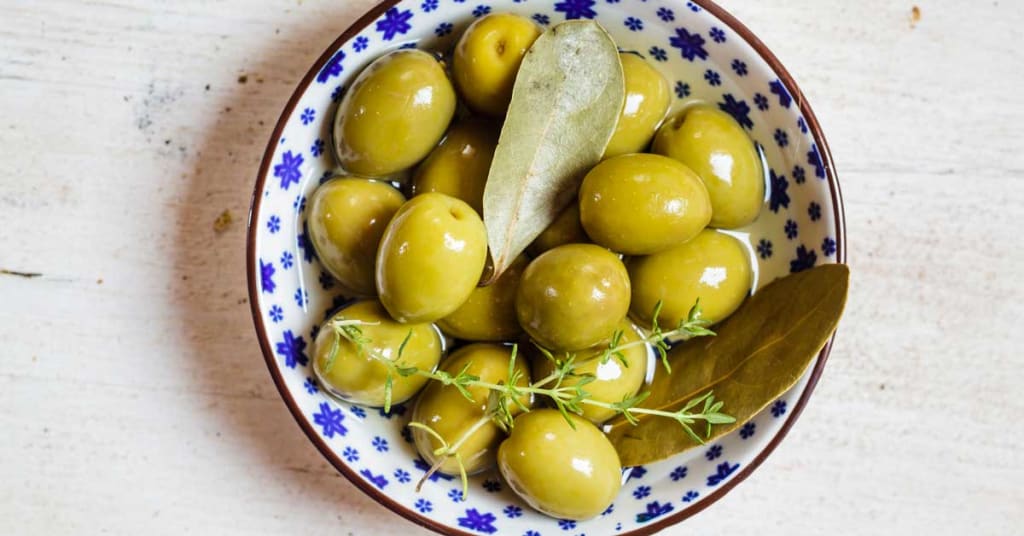Olives
The appetizer that is more than that!

For those who don't know, when we talk about olives, we don't just have one kind of olives. We have several: Black olives, green olives, crushed, shredded or stuffed with the most varied delicacies.
And also for those who don't know, olives, in whatever form, are part of Portuguese gastronomy, besides being appreciated as an aperitif or even as an ingredient and varied dishes. But, what you may not know or know is that this small aperitif has great benefits!
And although it has a bad reputation, this is due to its high fat content, and is even accused of causing acne, our little olive, when consumed in moderation, has many benefits for our health.
The problem is that people never eat in moderation, they have more eyes than belly and then they put the blame on the food...Anyway!
Believe it or not, if you want, but know that the olive, 80 percent of it is water, in addition, is rich in minerals and vitamins, such as calcium, sodium, vitamin E, iron and copper.
What's more, a portion of four large olives has 20 calories and about 2 grams of good fats, and that's not me. Says Kristin Kirkpatrick, who is a nutritionist and manager of nutrition and wellness services at the Cleveland Clinic Wellness Institute.
And according to this nutritionist, "olives are one of the richest fruits in nutrients and, although they are mainly fats, they are monounsaturated, which means they are healthy and benefit the heart, brain and weight maintenance. Oh yes, my friends, after all the olive... it's not so bad!
But don't worry, there are olives for every taste. But you must remember that before buying olives, whether they are packed or in bulk, you must check that they are homogeneous in colour and that they have no defects. And once at home, they should be kept in a cool place with no light, preferably in the refrigerator. This way you can keep their characteristics for longer.
And when it comes to preparing your favourite dishes, this is for those people who do not see the olive as a mere aperitif and devour them without any kind of control. Ah! By the way, it's good to remember that black olives are sweeter and the green ones more bitter.
And this beautiful fruit from our beautiful olive trees combine perfectly and beautifully with salads, but it can also be delicious together with pasta, rice or even sprinkled with a beautiful Bacalhau (codfish) à Brás.
And since I couldn't help it, I can't talk about olives, not to mention a few curiosities about them:
Did you know that olives come from the olive trees, but did you know that this is a common plant species in the Mediterranean region, particularly in Iran today and in the northern Caspian Sea?
The truth is that people are more used to the product you make with them: olive oil, because if you pick an olive and try to eat it, you cannot because it is extremely bitter.
I don't know if you know, but you know, Portugal is not a very big country geographically speaking but we have a very big variety of olives. Don't you believe it? Because here you have some, yes I said some olive varieties that exist in Portugal: Carrasquenha, Cobrançosa, Cordovil de Castelo Branco, Galega Vulgar, Galega, Maçanilha Algarvia, Redondil, Picual, Verdeal and Madural.
Continuing our journey in olive growing, did you know that it belongs to a special group of fruits called drupas? That is, they are fruits that have a pit or a stone in their core and that are surrounded by a larger portion of what is called a pericarp. Other examples of this type of fruit are: mango, peach, cherry, plum, apricot, nectarine, almond and pistachio.
And they knew that the Olive trees have a great longevity. When I say big, it's really big, because they can live up to several hundred years.
On the tree, the olive appears very green, but then, with time, the bark gets grayish tones and soon turns golden. Then it turns brown, and the next step is the metamorphosis, which means that it becomes purple and darkens until it turns black. The blacker it gets, the longer it stays at the foot of the olive tree.
So, as you can see the olive is not just an ingredient or a simple aperitif. It's true that most olives are for the production of olive oil and as we well know there are several types of oil with various degrees of acidity, but I think that's another story!
About the Creator
Fernanda Manuela Tomas Viegas
I'm a curious person. Love to read, i love to write and i love to tell stories, speacelly when we have small children






Comments
There are no comments for this story
Be the first to respond and start the conversation.